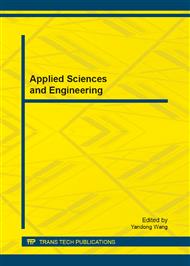p.448
p.455
p.462
p.467
p.473
p.477
p.482
p.489
p.496
Contourlet-S Retrieval Algorithm Using Absolute Mean Energy and Kurtosis Features
Abstract:
Contourlet transform has better performance in directional information representation than wavelet transform and has been studied by many researchers in retrieval systems and has been shown that it is superior to wavelet ones at retrieval rate. In order to improve the retrieval rate further, a contourlet-S transform based texture image retrieval system was proposed in this paper. In the system, the contourlet transform was constructed by non-subsampled Laplacian pyramid cascaded by critical subsampled directional filter banks, sub-bands absolute mean energy and kurtosis in contourlet-S domain are cascaded to form feature vectors, and the similarity metric is Canberra distance. Experimental results on 109 brodatz texture images show that using the features cascaded by absolute mean and kurtosis can lead to a higher retrieval rate than the combination of standard deviation and absolute mean which is most commonly used today under same dimension of feature vectors. contourlet-S transform based image retrieval system is superior to those of the original contourlet transform, non-subsampled contourlet system under the same system structure with same length of feature vectors, retrieval time and memory needed, contourlet-S decomposition structure parameters can make significant effects on retrieval rates, especially scale number.
Info:
Periodical:
Pages:
473-476
Citation:
Online since:
September 2012
Authors:
Price:
Сopyright:
© 2012 Trans Tech Publications Ltd. All Rights Reserved
Share:
Citation:


